Over the Moon: an interview with Nat Curran and Fran McDonald
The next step 30 November 2020
From A levels to space exploration – Nat Curran and Fran McDonald discuss their experience at Manchester and how a love of lunar studies has led them to exciting careers with NASA and the European Space Agency.
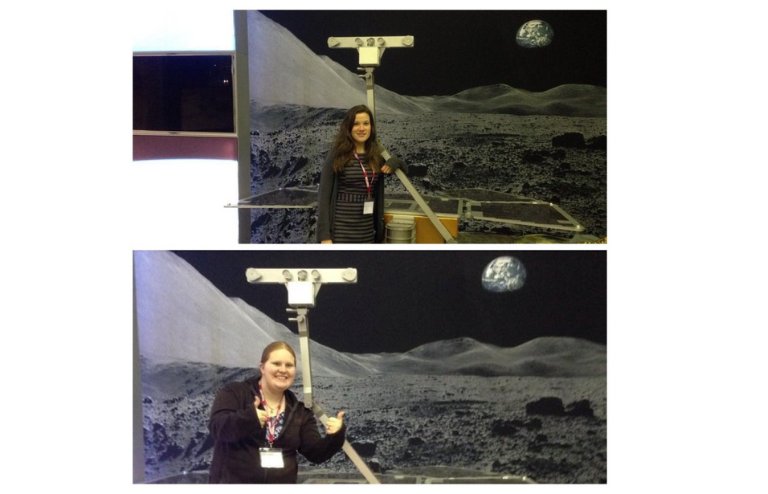
Jemma: What A levels did you study and where did you study?
Nat: I went to Loreto College, which is just down the road from UoM (all on the 86 bus route!) and I did Physics, Geography, Psychology as well as an AS level in Maths. It was my Physics teacher at Loreto that gave me a booklet from UoM advertising Geology and Planetary Science programmes, so I owe a lot to my Physics teacher! She steered me clear of Astrophysics due to the mathematical focus in that area, but the Geology and Planetary Science degree had a bit of everything that I was interested in and that appealed. If people are interested they should definitely give this a read.
Fran: I’ve had a non-standard route into higher education – I studied my A levels in Maths, Biology, Chemistry and Computer Science across two different colleges in the South of England (one doesn’t exist anymore, the other is Hastings College). I re-took my A levels as I didn’t do brilliantly the first time, and it’s worth saying this to show that it’s not the end of the world if you don’t get things right the first time! I also didn’t attend university until a bit later in life, so having life and work experience behind me already helped with my university application.
Jemma: What degree did you study at Manchester and at what level?
Nat: I did an MEarthSci in Geology and Planetary Science – I wanted to do the integrated masters so I would get to do the independent mapping project and a planetary science final year project!
Fran: I started on the BSc Geology, which already had the independent mapping element integrated, and then changed to the MEarthSci integrated masters with the extra research year at the end, which allowed for experience of conducting analytical science in the laboratory environment.
Jemma: Where did you do your doctoral studies?
Laughter
Nat: We are laughing because we both studied for the PhD at Manchester! I did my masters project with Ray Burgess, looking at Moon rocks. I realised that I didn’t want to do anything else with my life other than work with Moon rocks (and other planetary samples) after that point! When I finished my undergraduate degree there were no PhD projects that appealed to me, so I took a year out and worked. But then, a new PhD opportunity with a brilliant lunar scientist – Katie Joy (as well as the awesome Ray Burgess) – came up, working with the Moon, and I was sold! This project was working with lunar meteorites, and looking at how long they’ve been lying around in the top few meters of the lunar surface, and exposed to the space environment.
Fran: Similarly, it’s a story of the road to Katie Joy! Nat very much had the Moon in her life already, but I was still a core geology person. My independent mapping area was looking at structural evolution a bit more – the mechanics of it – so I really enjoyed that. But when I did my masters research year with Ray Burgess at the end of the MEarthSci, I was using the Argon dating technique to age rocks that had been erupted in granitoid plutons in high latitude regions like Greenland – when they cooled they trapped down signatures of the atmosphere. They needed dates alongside the composition measurements that had been made, to model what the palaeo climate record looked like and how it varied over time during the early- to mid- Cenozoic (60-20 million years ago). Typically, such palaeoclimate models have been based upon analyses of samples from ocean dredging around equatorial regions, so to help extend the dataset to high latitude regions, I was helping by using Argon dating utilising the noble gas analysis technique under the expert supervision of Ray Burgess, and then when I started to look for PhDs there were two that came up that were of interest.
There was one investigating volatile reservoirs on the Earth using noble gas analysis and there was one investigating the Moon and the volatile history of the Moon using noble gas analysis (this is very much where Katie Joy came in with the Moon project). I applied for both opportunities and got offered both positions! After a discussion, the projects got merged into a comparative study of the Earth/Moon systems. So, it became a mash-up of these two PhDs to use the noble gas analysis technique, assessing the noble gas and halogen content of the Earth and the Moon, particularly looking at mantle-derived rocks (rocks erupted from the interiors of the two planetary bodies). This was to try and target volatiles that may have been incorporated into the Earth-Moon system early in their history, as opposed to volatile “stuff” that might have been delivered later on. So, that was my transition through to the Moon!
Jemma: The next thing to ask then is – what are you doing now, what’s your current role and how did the PhD lead to your current career?
Nat: I moved over to the States, so I’m currently working in Greenbelt, Maryland, just outside of D.C. I started as NASA Postdoctoral Fellow at NASA Goddard Space Flight Center. For this position, I wrote a proposal near the end of my PhD – a x15 page job description of what science I wanted to do and I submitted it to the NASA postdoctoral program (NPP). And I still can’t believe I got it! My original project was taking what I’d learnt from working with mass spectrometers in the lab at Manchester and working with an instrument that actually miniaturises this technique so one day we can have this type of instrument on a rover to the Moon, Mars, or another planetary body. My current boss (Barbara Cohen) developed a small dating instrument called KArLE, which is the Potassium-Argon Laser Experiment. KArLE is a really cool, little instrument that takes the components that we use on larger lab-based instruments and deploys them at a much smaller scale. For example, our lab mass spectrometer contains a large magnet that weighs basically the size of a baby elephant – so trying to get that on a mission to the Moon or Mars would be difficult. We’ve tried to shrink the scale of the instrument down with KArLE. When I arrived here though, KArLE hadn’t moved from NASA Marshall (in Alabama), which was where my boss was previously, so I ended up being given some Apollo 16 samples! Which I was not complaining about. I was looking at particles (around 1-4 mm) from a 70 cm core sample taken during the Apollo 16 mission. For each particle we were investigating its parent lithology (e.g. did it come from the highlands of the Moon or a basaltic lava flow?) and how old these particles are.
So, I started working with Apollo 16 samples and that was nearly 4 years ago now! Recently we wrote another proposal, which was accepted, and it is an exciting project working with never-before-opened Apollo sample: this time from the Apollo 17 mission. The sample is a 60 cm drive tube core sample, collected and sealed on the Moon in 1972, and it has never been opened since. That was nearly 50 years ago now! With this project, I’ve now moved from an NPP to a contractor at Goddard. And my team, which we’ve named Moon United (after my two favourite things, the Moon and Manchester United) are doing similar task to what I did for my PhD and looking at the chemistry and exposure ages of particles throughout the core. Fran and I (and Katie Joy) are now back in a mini-consortium working on this – and it’s great to be working together again. Both myself and Fran have had the opportunity recently to go in to the curations labs at Johnson Space Center and be a part of the opening and processing of this newly opened core sample. This is really a dream come true. The place is home to all the Apollo samples, it’s like Moon heaven and certainly a highlight of my career.
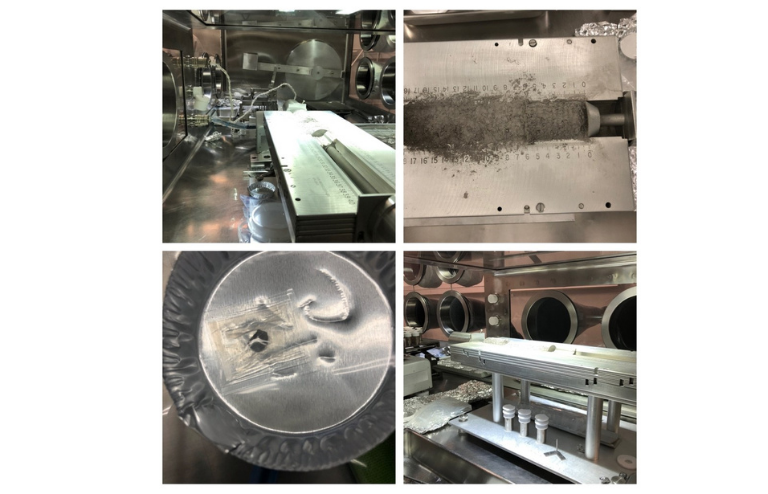
Fran: the KArLE instrument will be a game-changer to allow dating samples at the surface of the Moon (you’ve always had to rely on returned samples previously), so it’s a really cool project.
An important step to mention before I say where I am now is that Katie Joy during our PhDs encouraged us to pursue experiences and opportunities outside of university too, like those offered by the Lunar and Planetary Institute summer internships. This is where you go to Houston for 2.5 months and work on a project there, usually focussed around designing a mission concept. We both did that, Nat went first and I followed later. We were looking at a project that considered what a scientific mission at the surface of the Moon might look like whilst using mission architecture that ESA was working on. I’d already got a bit of a background there before I applied to the European Space Agency, which is where I’m working at the moment. Based on having those sorts of opportunities and having done hands-on analysis of lunar samples as well, you gain knowledge of how to not only ask the right questions for analysis but also the rules of handling samples for the purposes of curation. That’s not knowledge that everybody has, and this is really cool stuff that we get to work on – you never really forget that. Going through the PhD process of learning analytical techniques, such as the noble gas analysis technique and other core techniques for characterising samples, learning how to apply this to address certain scientific questions, gives a great grounding for identifying future questions and projects.
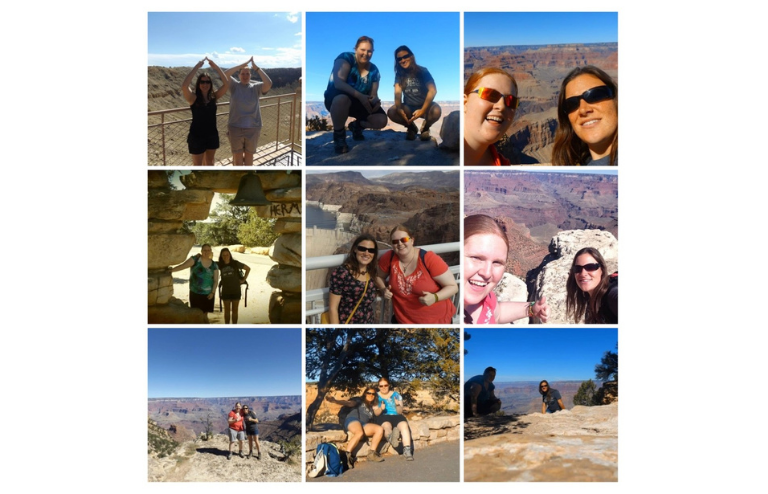
It was 3-4 months after my PhD that there was then an advert with the ESA for a Research Fellow position – which is effectively a postdoctoral role. There are different directorates at ESA and they each work a little differently. If you go into the science directorate then you largely concentrate purely on research as a research fellow, but directorates outside of that have the approach of half research and half work. I was applying to the human and robotic space exploration directorate (so half work and half research). What they really wanted was someone who had experience of lunar samples and could bring in a capability of perhaps doing some sample analysis in-house at ESTEC, the branch of ESA that’s based in the Netherlands. They also wanted someone who could bridge the sample analysis knowledge with helping to inform potential missions and future exploration of the Moon. I applied for that role, and thanks to previous experience of having visited Moon impact crater analogue sites like Meteor Crater in Arizona, having done the internship in Houston, and application of science knowledge and hands-on work through the PhD; I was fortunately ticking a lot of the boxes for the role. Since starting I have implemented sample analyses protocols at ESTEC and submitted a successful request proposal to the astromaterials curation facility at JSC, Houston for lunar samples. I have been informed by the curator of the Apollo samples at JSC that I will be receiving the samples soon! I also applied successfully within the last couple of months for a staff position as ‘Moon Exploration Scientist’ at ESA so have now transitioned into a staff role – I’ll be providing the science input towards preparation for concepts around upcoming Moon missions, at the moment focussing around an idea for the European Large Logistic Lander (EL3). This isn’t a thing yet! But there’s an ongoing study around designing and developing the lander, and as the Study Scientist, I’m helping with providing the science inputs, informing what that mission may look like, and how it may address outstanding lunar science questions recognised by the lunar community. It involves communications with the lunar science community systems team, the engineers, the operations and communications team and numerous others, to develop and build this big lander whilst making sure that it’s compatible to support the type of mission that could go and answer important science and exploration questions of the Moon. So, it’s a really complex study scenario and I’m enjoying bringing the skills and techniques that I have learnt so far forward to apply in the context of mission planning. Fingers crossed that EL3 makes it to the Moon!
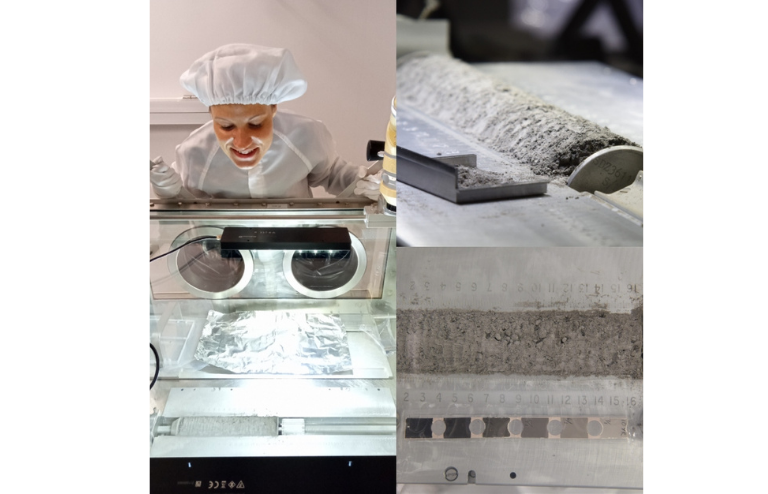
Talking about the project that Nat brought up with the Apollo 17 samples, it’s called the Apollo Next Generation Sample Analysis Programme. As a consortium we’re looking back at these old samples, revisiting how they were collected and curated, as well as scientifically analysing them, so that we can learn what we can improve in future sample return mission planning as well. We forgot to also add that Apollo 17 astronaut Harrison “Jack” Schmitt is a member of this consortium, so it really is an incredible opportunity for us, working with international experts. ESA’s part of the ANGSA program looks at what can be learned for containment of future samples – particularly relating to human exploration in perhaps the polar regions – it’s likely that samples from these regions could be rich in cold-trapped volatiles but therefore also have transient properties that you really want to preserve and avoid altering in any way when returning polar samples in the future. It’s hard enough to preserve these precious samples as if they were still at the lunar surface, let alone if they’ve got these highly volatile properties! So, this is something we can really learn from this previously unopened Apollo 17 core sample, because it was sealed in a special way different to other samples to best preserve any volatile or organic components. The problem is, how do you open this sample – there’s no easy way to extract the gas from this sealed container – that’s another thing that ESA’s doing: we’re helping to design an implement that can open the sealed container in a very controlled way to extract any loose head gas first before the core itself is then extruded and samples allocated. So, we want to learn from this whole process: how well did this Apollo 17 container preserve volatile samples? Physically how do you open it? How does that feed forward into future sample return mission planning?
Jemma: I was going to ask about future lunar exploration…how does it look, what’s coming up?!
Nat: Unofficially (I’m not speaking on behalf of NASA of course) but it’s quite an exciting time to be working within space agencies right now. For example, NASA are planning to go back to the Moon by 2024, with the first woman and the next man. This is very, very exciting – we’ve not landed on the Moon since 1972 with people, so it would be phenomenal for our generation to see our own Apollo era, which this time around will be called the Artemis missions. Fun fact, Artemis was the sister of Apollo in Greek mythology, so this is pretty fitting. There’s a lot of buzz around the place now in preparation for these missions. We’re also working with commercial companies as well. My boss is heading up a team in a partnership between NASA Goddard, The Open University (OU), and ESA, providing a payload called The Peregrine Ion Trap Mass Spectrometer (PITMS) which will fly aboard the first flight of Astrobotic’s Peregrine lunar lander. This is part of the NASA Commercial Lunar Payload Services (CLPS) program. PITMS is looking at volatiles – if it works out, this machine will basically sniff the “exosphere” to see what volatiles there are! It’s very, very nice to be part of this team and become involved in seeing all aspects of how different types of missions get started, get planned, and what team members have to consider. We are working with a group of engineers as well. As a scientist I just want our missions to go in all craters, and all lava flows on the Moon to be explored, but the engineers keep expectations realistic and make you realise all the different aspects that go into these mission plans. We also have a Planetary Science Decadal Survey that’s coming up in the next few years. This is where decisions will be made about what science questions are important in terms of the scope of planetary missions over the next 10 years. We have a few ideas for a geochronology project, so, we want rovers for this, like KArLE, going around analysing the samples on many planetary bodies. This helps us understand the history of impact through the lifetime of the Solar System. Ideally, we would want samples returned from everywhere in the Solar System, as well as the Moon, so we can understand how the Solar System has changed over time, but that’s never going to happen! So, rovers like this are great, but like Fran mentioned, you need mobility to get around the surface.
People always say: we have been to the Moon, we’ve been there, done that, got the samples. But if you ask any lunar scientist, they’ll strongly disagree. Just taking Apollo 11, the mission only landed and explored a small region, they didn’t go that far. If you compare the distance the astronauts walked, the whole area would fit inside a football pitch or the infield of a baseball pitch. Or if you compared the last traverse by astronauts on the Moon, which was during the Apollo 17 mission, it would fit within the city of Paris, France. So we’ve been to the Moon, but we certainly haven’t explored much of its surface or been to the farside (not the darkside 😊) or the polar regions.
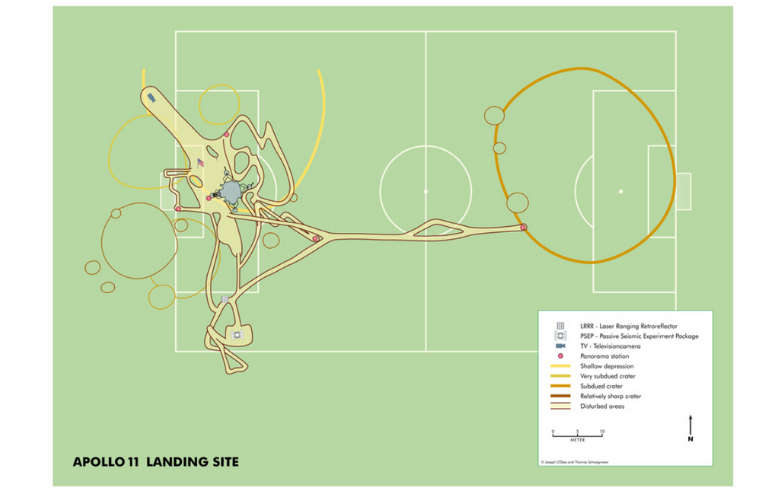

Which brings me to Earth. If you could pick one or two spots on the Earth where you would want to go? That one spot that would summarise the whole of the Earth for you. If you’re an alien looking from afar, intending to investigate the Earth but you can only go to one place, where would you go? I mean the biggest target on the Earth, that you can see from space is the ocean. But, if you just look at a country like America, you can see how things change from state to state (from the deserts in California, to the Grand Canyon in Arizona, and Yellowstone National Park). It’s the same with the Moon, we need to keep on exploring. That’s one of my big pushes for going back to the Moon: there’s so much more to learn. The Moon has some of the most ancient surface we see in the Solar System, a lot of this evidence has been erased from the Earth because of things like plate tectonics and erosion. But the Moon doesn’t have either of these things (the main form of erosion on the Moon is from impacts). So, we can go to the Moon, pick up some of these ancient crustal rocks, and get an understanding of what was going on in the Solar System at the time of their formation.
It’s very exciting that there are these new commercial landers going to the Moon. Someone just give me an astronaut suit and I will go tomorrow!
Fran: I agree! It’s an exciting time for Moon exploration – it’s well overdue. If you look where the Apollo (USA) and Luna (Russia) landers are, it’s a very similar region, it’s on the near side, predominantly equatorial region, it’s a very similar type of terrain. We call it the Procellarum KREEP Terrane. And arguably if you look at some of the datasets, it looks like that might be a slightly anomalous region with a dominant chemistry and behaviour that may not reflect the rest of the Moon. So, if you’re now extrapolating that to the whole Moon, is that the correct thing to do? The global orbital datasets are suggesting that there are distinct differences across the surface of the Moon. It’s like Nat said, you can’t just say that one football or baseball field represents the entirety of the world. You can’t land on a desert somewhere and think, oh, the whole planet must be a desert. Okay so you won’t be getting the same tectonics that are happening on the Earth, and you’re not going to have differences such as those driven by weather supported systems as on Earth, but you’re going to have differences globally on the Moon. This is what we want to learn about. The Apollo missions were a really good start, they changed our views massively, we thought this was a dusty, dry ball up there when actually, the more we’ve revisited the samples we have and the more we’ve advanced our analytical techniques and developed more sensitive instruments that can look at samples in another way, it turns out that it’s not completely dry. There might be some samples, some of these volcanic glass beads for example that have been erupted from the interior of the Moon that have got quite a high water content – almost comparable with some parts of the terrestrial mantle. So, that’s really quite interesting to learn, but that then generates new questions: when did that water or those volatiles get to the Moon, were those delivered later and incorporated by being “churned” in via impacting or some other process? Were water and other volatiles always present at the formation of the Moon and they’ve been erupted to the surface and evolved since? Can we answer that from the samples and the information we have? People are trying to address that, but it’s becoming very apparent that we need new samples to be able to now address a new set of questions that have been kickstarted from what we have learnt from the Apollo collection. To understand that on a global scale we are going to have to go to other regions. You only need to look at a picture of the near side and the far side to see that something quite different has gone on with the formation of the crust and the evolution of the crust. There’s some very different formation and evolution activities going on there and that’s what we need to explore.
At the same time, there’s a massive interest as Nat says in getting humans back there, preferably women – we need a woman up there! A well-trained astronaut is one of the best tools you can take. So as well as revisiting the Moon for science, you also want to consider that there is a need to start to characterise the surface environment with regard to putting in place the correct safety preparation ahead of possible future sustained presence of humans at the lunar surface. Future missions will also be about understanding how you can utilise the environment if humans are there safely, and how you can prepare for onward exploration, such as to Mars, as well as addressing fundamental science. As Nat said we can learn so much from the Moon. At the moment, we’re extrapolating a lot of what we do know about the Moon to other planetary bodies – you would then want to go on and test that, to compare all the planetary bodies together to really piece together the history of the inner Solar System and how planetary bodies and systems form as a whole. The Moon is our nearest neighbour and there’s a lot to still be learnt there scientifically and a lot to learn at the Moon that can then enable forward exploration. It is of course also massively political, and that’s another thing to always consider in terms of mission planning and approaches taken!
Jemma: I was going to ask you a question about “impact” but you’ve pretty much addressed that there!
Fran: Impact craters?
Jemma: no, the impact of your work!
Laughter
Fran: An emergence of commercial companies in the world of space exploration has been a real game changer for how lunar exploration is being done now. Even if people aren’t scientific researchers, or at ESA dealing with mission planning, the space exploration opportunities that can spin out from more commercial involvement may be huge, with business and robotics being just two examples of other topics that people could be studying that feed into future exploration.
Nat: The different people that you work with as well is really cool – people from a range of backgrounds and with different lifestyles. At Manchester I was so used to interacting with a group from core science/geology backgrounds. But here, I work with everyone, from engineering, to software and IT people developing software for the specific instrument that you want to use. We have also recently had some interns looking at cameras and how they could fit on an instrument. There are so many different things out there that open your eyes to possibilities.
Fran: It’s hugely international, we have to communicate with and manage inputs from a large community with a range of expertise. You can’t focus only on the science, although for lunar exploration the science is a big part helping to drive future mission planning.
Jemma: Do you have any advice for people applying to university right now? Either at undergraduate or postgraduate level.
Nat: Definitely take opportunities. We were lucky and privileged to have someone like Katie fighting our corner every step of the way. The internship at the Lunar and Planetary Institute is a great example – I doubted that my application would be accepted – but if you find something interesting maybe just apply for it. You have to be in it to win it, right?! If you don’t apply, you’re not going to get it, but if you do apply, you might get it! The biggest thing I learnt during my PhD, and probably undergraduate as well, is that you shouldn’t be afraid to reach out for help. I don’t think I did that enough during my undergraduate. And: don’t be afraid to fail. Science fails all the time. I didn’t get results in my PhD until the last month before write-up. You learn a lot about the instrument when it breaks – and if things don’t go right. Things don’t go right all the time, and you then figure out why. Don’t be afraid to not like certain subjects too! Or dislike writing papers! You have to try things to find out what’s really, really going to interest you.
Fran: That’s spot on – the “in it to win it” thing is very important. It’s so difficult to overcome the old “imposter syndrome”. If you’re like me, you might have anxiety that riddles you all the time. Maybe you think you’re not good enough, you’re doing it wrong, or you’re going to fail. I should have enjoyed it more and not stressed as much as I did at times. Even from the very first application, if you’re sitting there thinking – maybe my grades aren’t good enough, or I can’t get it – don’t let self-doubt stop you from applying, really present and articulate what you can do. Young women are particularly prone to this way of thinking, and you still see this a lot in the space industry. Also, as Nat said, take those opportunities and ask about them. If you don’t get it, then you apply again another time. And the learning to deal with setbacks and letdowns and things failing as Nat said is important. The particular area of science we were in at Manchester, we have a quote that there’s “a law of mass spectrometers” at Manchester that only one could ever work at any time! So, if it’s not your time, you’ve just got to wait and try again. Nat is an expert on that machine – she spent a lot of time nursing it – and it has become an important part of her role. See what you can learn when everything is working, and if you can’t get anything, see what you have learnt from it and report on it! This is really useful to science – it would be good if people were to report more on what are seen as “non-results”. They’re actually results. It’s important to log, it’s important to learn from and feed forward. You do get scared of and knocked back by failure, as Nat said, but actually these are things you can learn from.
Jemma: What do you think about showcasing the role of women in science, especially in your area?
Fran: I think things are changing. I think they are going the right way. It doesn’t need to start at a job interview, though, it needs to start earlier. There needs to be this re-training from early on about applying for things and putting yourself forward. This applies to everyone – not just women.
Nat: I mean, my lab is called the (MNGRL) Moon Girl Lab! It is an acronym for Mid-Atlantic Noble Gas Research Lab! But actually, up until last year, it was all women that were working in there! My team for the ANGSA project is actually 5 women as well. It’s really encouraging. Not just females – it’s about making sure we’re diverse as well. Anyone can be a lunar scientist or a planetary scientist. As a kid, there’s no way I would have thought that I’d be able to work for a space agency, NASA, ESA or anything. The prospect of working for these space agencies, doing sample analysis, being involved in missions…it blows my mind every time I walk through the gates, when I see a NASA meatball or an ESA sign! All I ever wanted to do was to be an astronaut at NASA and to go to Manchester University. They were my dreams. I haven’t made it to be an astronaut yet but I am very happy with the outcome so far! I always describe myself as a lazy astronaut, the rocks come to me instead of me going to get the rocks.
Fran: The other thing to say is, referring back to the previous question of advice when applying to University – choose what you enjoy. Ultimately, you’re going to spend a long time studying it! It doesn’t matter if it’s not immediately linked to your end goal, I wasn’t doing anything to do with planetary science or the Moon when I started. My mapping was focussing on the structural and engineering geology and I loved it, getting out there in the field! That’s a bit I do miss, getting out into the field…short of a trip to the Moon, right Nat?! I still found a course through to being a Moon exploration scientist and study scientist for this large logistic lander study through a combination of different experiences, not just my undergraduate topic. There are many different routes, but you have to do what you enjoy along the way.
Nat: I just want to say as well, and I think I can speak for Fran too – Katie Joy has been a massive influence on both of our careers. We will be forever thankful for that! Even now, she’s very supportive. So was Ray Burgess, he’s such busy guy but would always find time to help us out. They are both such influential people and we can’t say thank you enough.
Fran: Yes, she’s been an incredible friend and mentor and has made so many opportunities for us. Great supervisors will really steer you. Ray is also a very patient man! Trish Clay was also a great help and incredible influence too.
Nat: I can just about forgive him [Ray] for being a Manchester City fan…

Argon datingEarth and Planetary ScienceESAexospheregeochronologygeological mappinglunar explorationmass spectrometersmeteoritesmoonMoon landingsMoon rocksNASAnoble gas analysispalaeo climate recordsolar systemstructural geologyvolatiles

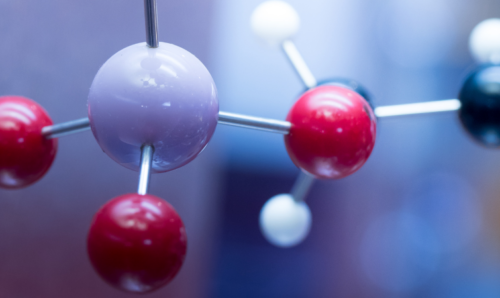
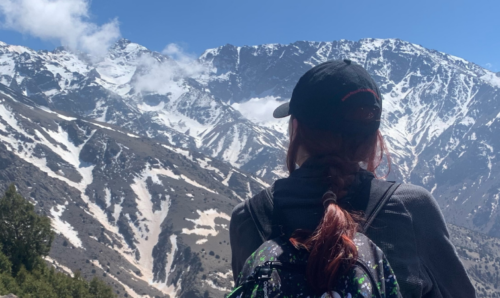
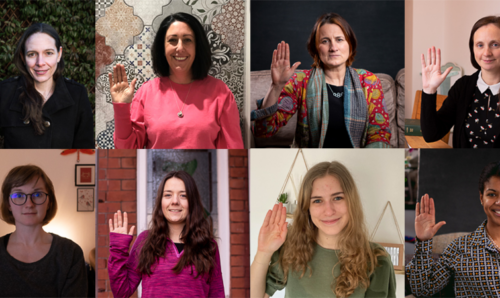
Leave a Reply